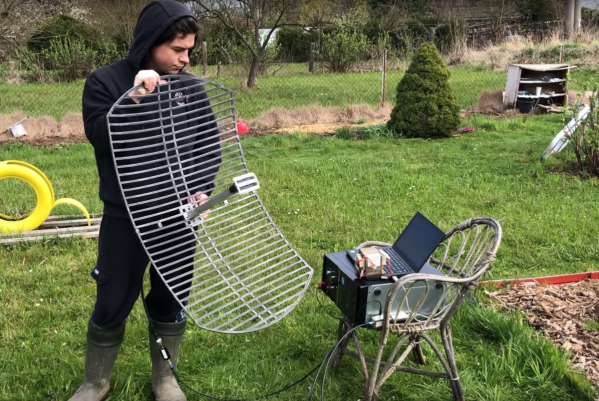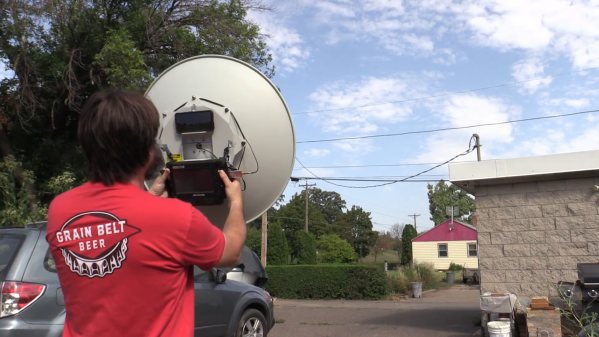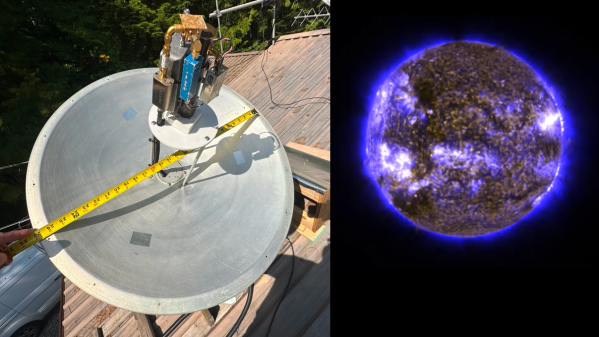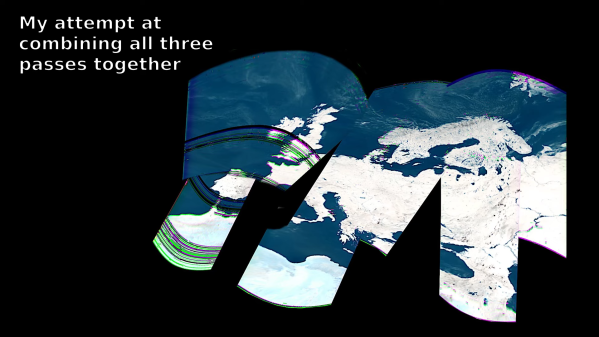One of the more popular activities in the ham radio world is DXing, which is attempting to communicate with radio stations as far away as possible. There are some feats that will earn some major credibility in this arena, like two-way communication with Antarctica with only a few watts of power, long-path communication around the globe, or even bouncing a signal off the moon and back to a faraway point on Earth. But these modes all have one thing in common: they’re communicating with someone who’s also presumably on the same planet. Barring extraterrestrial contact, if you want to step up your DX game you’ll want to try to contact some of our deep-space probes (PDF).
[David Prutchi] aka [N2QG] has been doing this for a number of years now and has a wealth of knowledge and experience to share. He’s using both a 3.2 meter dish and a 1.2 meter dish for probing deep space, as well as some custom feed horns and other antennas to mount to them. Generally these signals are incredibly small since they travel a long way through deep space, so some amplification of the received signals is also needed. Not only that, but since planets and satellites are all moving with respect to each other, some sort of tracking system is needed to actively point the dish in the correct direction.
With all of that taken care of, it’s time to see what sort of signals are coming in. Compared to NASA’s 70-meter antennas used to communicate with deep space, some signals received on smaller dishes like these will only see the carrier wave. This was the case when an amateur radio group used an old radio telescope to detect one of the Voyager signals recently. But there are a few cases where [David] was able to actually receive data and demodulate it, so it’s not always carrier-only. If you’re sitting on an old satellite TV dish like these, we’d certainly recommend pointing it to the sky to see what’s out there. If not, you can always 3D print one.

















